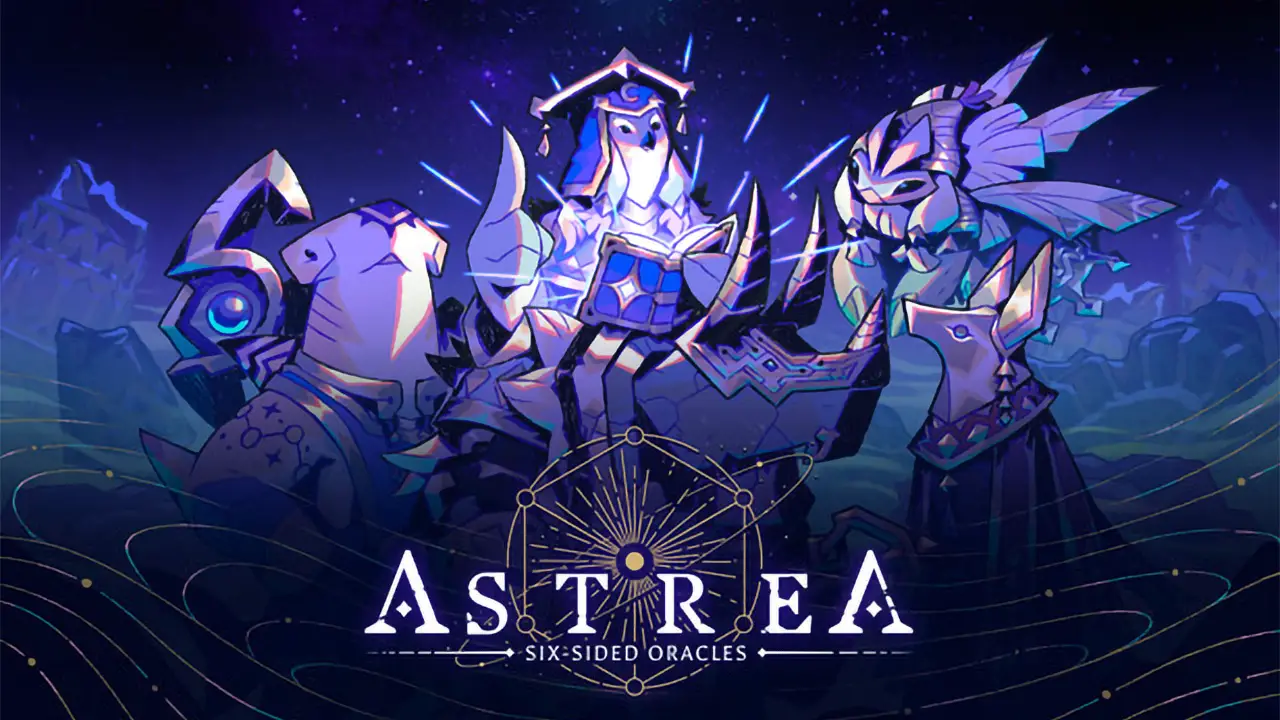Ever since Slay The Spire released to commercial success and injected deck-building mechanics into the mainstream of indie games, many indie titles have tried to follow suit. This ultimately led to a series of clones, some better than others. However, a handful of games over the years managed to take what made Slay The Spire so great and apply their own unique twists to its formula.
Games such as Monster Train took Slay The Spire’s deck-building and map navigation and added a tower defence twist similar to games like Plants Vs Zombies, while more recent titles such as Cobalt Core take influence from games such as FTL: Faster Than Light by adding space combat into the mix. Astrea: Six Sided Oracles uses a distinct combination of dice rolling and a unique ability system to set itself apart.
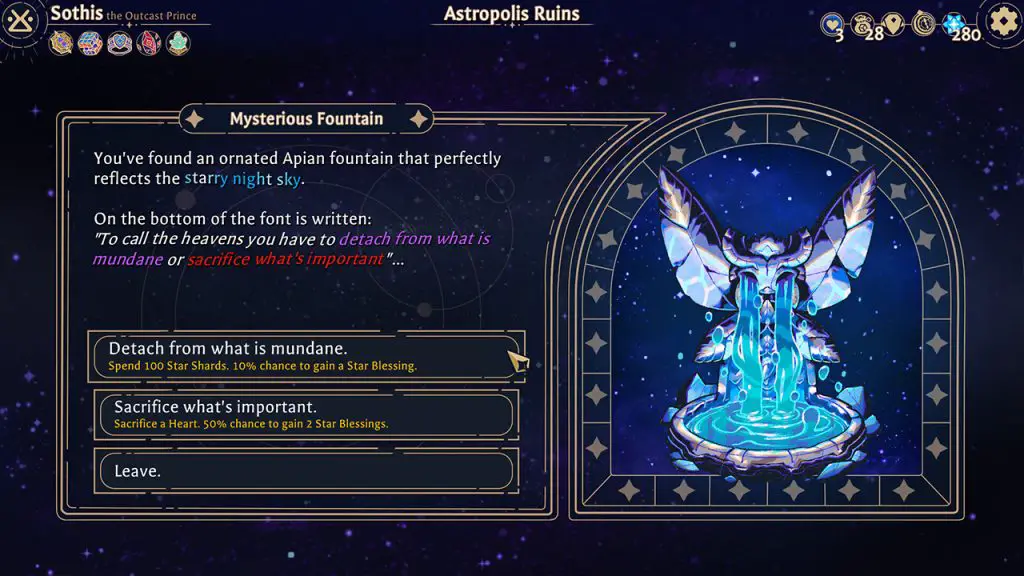
Story
While its narrative is certainly not Astrea’s focus, it does an ample job of providing context for the game’s combat and characters. The subtle and well-illustrated opening slides tell us that this world was once guided by Oracles, who led a utopian age. This all changes when the source of their power is corrupted, and the world falls into disarray. Players take on the role of a descendent of these Oracles, fighting to remove the corruption from the denizens of the world.
While this story is fairly by-the-books and bare-bones, it allows Astrea’s tone to feel fairly light-hearted and borderline wholesome. Instead of beating trolls over the head until they’re dead, Astrea has players removing corruption from various abstracted creatures until they’re friendly again. However charming this might be, the story is far from Astrea’s focus, and it won’t be the reason players stick with it; it’ll be for the gameplay.
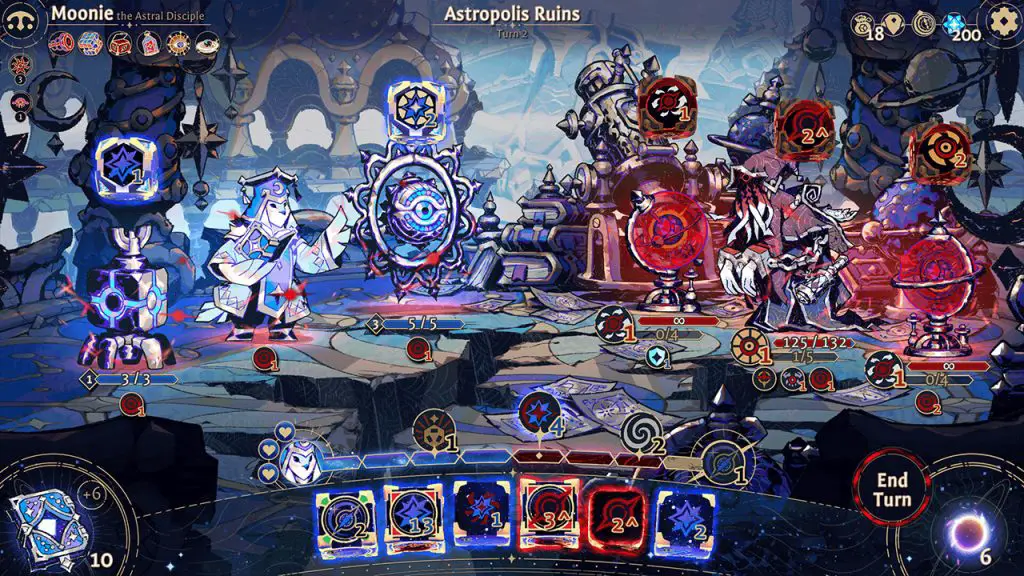
Gameplay
In a nutshell, Astrea is a “dice-builder”, meaning players add a variety of dice to a bag, rather than cards to a deck. These dice can be rolled, re-rolled, and manipulated in combat in various ways. Furthermore, players can even change specific sides of the dice as the run progresses. Due to the nature of the game, Astrea often puts players at the mercy of RNG, but there are usually ways to combat this. Regardless, bad luck sometimes wins out.
Astrea also features a unique “virtue” system that has players unlocking abilities as they take damage. These virtues are a clear focus for the game, despite the fact that they often don’t feel very powerful. However, virtues can be refreshed by healing, then taking damage again. While this might sound confusing, it’s actually rather simple, but you’d be right in thinking it’s a little strange.
This is where things start to get a little murky. Astrea: Six Sided Oracles is a rather unique game, and it brings a lot of new ideas to the table. While this sounds good on paper, it makes the on-boarding process much harder, and it’s very easy to bounce off of. Although this is primarily something that players will simply have to push past, it must be said that the process could have been made easier with a clearer user interface.
This battle with the UI is Astrea’s biggest downfall, as it often leads to confusion, which often kills the tension. So many of my early runs through the game ended in a death that I had no idea was coming. This isn’t helped by small oddities such as certain enemy buffs happening right before they attack, making it very easy to miscalculate how much damage you’re about to take. Even when all of the information is presented to the player, it often takes several steps to figure out what the situation is, and I often found myself wishing I was spending more time deliberating over what I was playing, rather than doing mathematics.
On the upside, the UI outside of combat is clean and clear. The map is easy to read, and places where players can spend shards (the game’s currency) clearly mark the minimum price of the items there, meaning players can make informed decisions about where to go just by looking at how many shards they currently have. Furthermore, adding new dice to the pool is easy, and parsing what a particular dice does is extremely easy to do; all sides of a new dice are shown to the player at once, and discovering what that face does is as simple as hovering over it. This makes building a deck a great experience, it’s just a shame that using the deck in combat isn’t quite as fun.
Progression
Astrea’s progression is fairly linear and works similarly to games such as Slay The Spire, which it takes clear influence from. As players complete runs with specific characters, they gain experience for that character. Levelling up characters unlocks new and interesting characters to play, as well as new dice for that character specifically. This progression is relatively satisfying, and while it doesn’t break new ground, it doesn’t really have to.
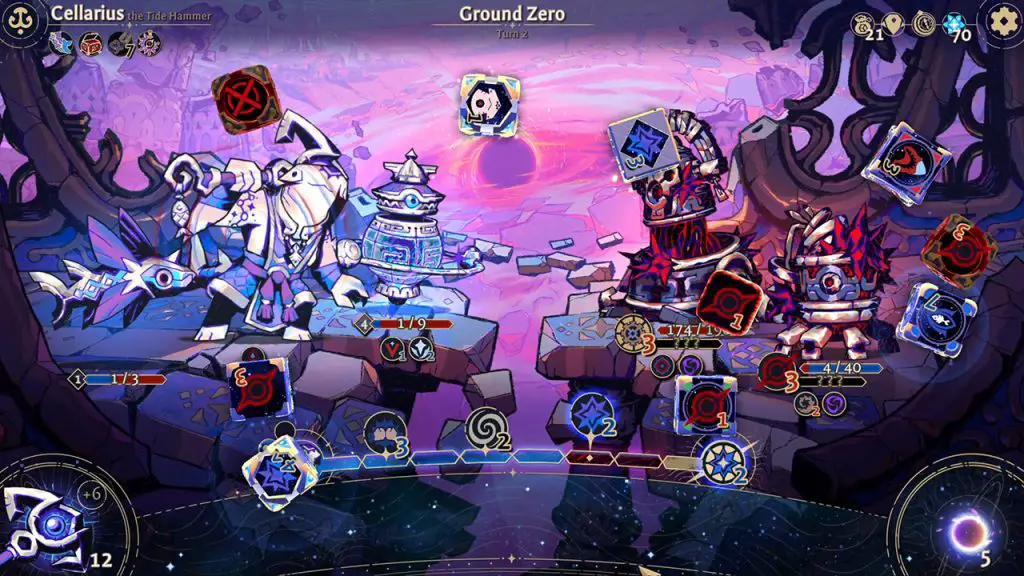
Graphics
Like its gameplay, Astrea has a distinctive style that’s both unique and bordering on abstract, with limited colours and strange character designs that won’t be for everyone. However, for those that enjoy its alien aesthetic, Astrea is a visual treat.
The playable characters are especially noteworthy, with each character having a distinct look and feel to them. The enemy designs are somewhat weaker, with few of them offering the same recognisable silhouettes as enemies in games such as Slay The Spire. While not a deal-breaker, the limited colours do little to help with this recognition issue.
Sound & Music
Astrea’s music is wonderfully adventurous and has a strange melancholic joy that runs throughout its entirety. However, some of the tracks can get a little too familiar, and there are a few that share one too many similarities. Despite this, tracks such as “Stellarium” rarely get old, and they perfectly fit the game’s atmosphere and visual style.
The game’s sound effects are perfectly passable, featuring fairly standard dice-rolling sounds and various grunts and metallic effects as enemies and characters take damage. Everything is balanced well and fits the tone, and nothing sticks out to the point of annoyance.
Performance & Settings
It’s no surprise that Astrea runs smoothly, and given its nature as a 2D turn-based deck-builder, I’d be concerned if it didn’t. So far, I’ve yet to encounter a single bug or crash.
Astrea also offers plenty of settings, allowing players to tailor their gameplay experience or somewhat optimize the performance of the game. This is much appreciated, especially the speed scale option that allows players to dramatically speed up the game. I’d recommend turning this on before playing a single turn, as runs can be laboriously slow without it, and I’m a little shocked that a quality of life option such as this was hidden away in the settings menu.
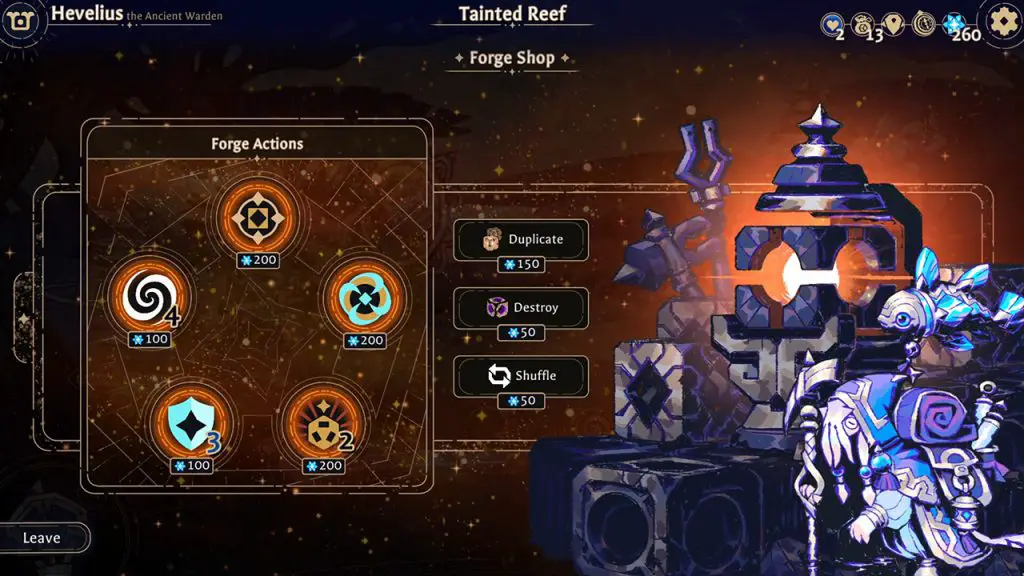
Conclusion
Overall, Astrea: Six Sided Oracles is a rogue-lite game that takes heavy inspiration from Slay The Spire, wrapped up in a package with great presentation. Astrea excels in its presentation with great music, competent sound effects, and smooth performance. However, its user interface and quirky gameplay mechanics make it a tough game to get on board with.
For patient players who enjoy puzzling out the right solutions, and don’t mind regularly spending a few minutes parsing what’s going to happen on each individual turn, Astrea might be worth playing. This is a game that won’t be for everyone, nor for every fan of Slay The Spire, but it’s certainly a unique experience that offers a variety of strategies. The game’s playable characters are all very distinctive, and the replay value on offer, despite its linear progression system, is noteworthy.
While players may occasionally fall prey to the whims of RNG, and the game’s UI can be hard to parse at times, Astrea is an experience that some players will probably get a good kick out of. It just requires a little patience to get to the good part.
Thank you to Akupara Games, for providing us with a review key.


